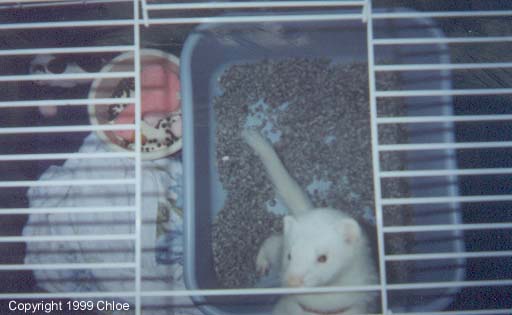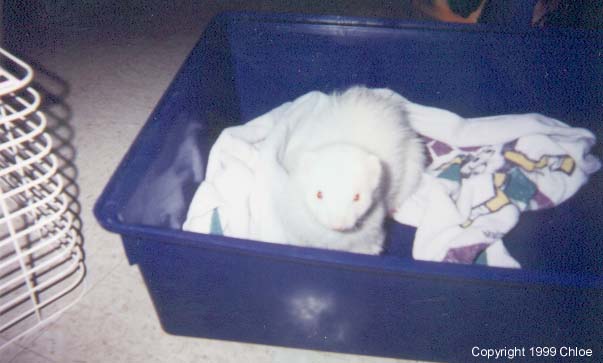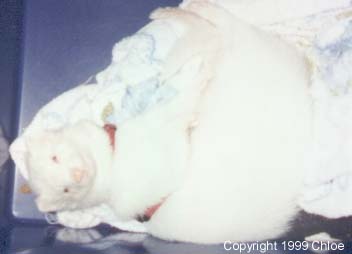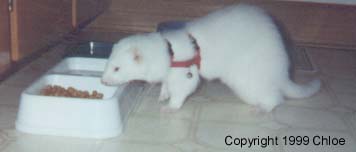HOUSING

Your ferret's house can be a cage, an aquarium, or a small room in the
house that has been "ferret-proofed." You can even let your ferret live
outside year round, but if you want to do this, be sure to place the ferret
outside for the first time during the summer. Then it will be able to adjust
gradually to changes in temperature and cooler weather as winter
approaches. If the ferret is left outside, it should have some shade - ferrets
cannot tolerate high temperatures and should not be in direct sunlight. It
will also need a small box or soft cloth to curl up in for sleeping. In the
winter you must provide straw or other warm nesting material. There
should be a roof over the whole cage to protect the ferret from wind and
weather.
If you decide to house your ferret in a cage, the cage should be at least 14
inches wide by 24 inches long and 10 inches high (about 35 X 60 X 24 cm).
This size provides space for two adults to live comfortably if they also have
some time out of the cage for play activities each day. Any cage design
should provide a litter area, a feeding area, and a sleeping area.

Discarded aquariums are frequently used for ferrets because of their low
cost and the excellent visibility they provide. Of course, they require a wire
top to prevent the ferret from escaping. The major disadvantages of an
aquarium as a ferret home is that there is little air movement at floor level,
and cleaning the litter area becomes difficult. Wooden boxes are also
sometimes used to house ferrets, but this is not desirable. Wood retains
moisture and germs, is difficult to clean, and impossible to sanitize.
Wooden boxes also prevent the ferrets from seeing out, making them
unable to observe and participate in their immediate surroundings.
The Litter Box
The ferret's litter box should have a low edge in the front and tree high
sides. The low edge makes it easier for the ferret to climb in and out of the
box. Since ferrets back all the way into a corner to urinate or defecate, you
will want three high sides to prevent accidents over the edge. It is a good
idea to leave some feces in the litter box until your ferret is completely
trained. This helps to discourage the animal from playing in the litter.

The Sleeping Area
The ferret needs a special nesting spot with appropriate bedding material
for sleeping. You can use an upright tissue box or plastic milk jug with
holes cut out in several places, bedding material can be soft cloth, cotton
preferably. A soft cotton T-shirt or old towel makes a nice sleeping cover
and can be washed easily. If the cage is being kept outdoors, the bedding
material can be hay, straw, wood chips, or other soft insulating material.
You should avoid cedar chips, which have been known to cause respiratory
problems in ferrets, and also sawdust which can cause eye irritation.

All ferrets need a constant supply of fresh food and water and you should
purchase their food dishes and water bottles carefully. A heavy dish or
shallow bowl is best for dry food. A light weight dish is easily dumped and
converted to a toy. If a lightweight dish is used, it must be attached to the
cage so the ferret cannot move it. Water should also be supplied in the
nesting area. Ferrets need a constant supply of fresh water. One easy way
to supply this is to use rabbit water bottles that can be affixed to the side of
the cage. All food and water dishes and bottles should be cleaned daily.



